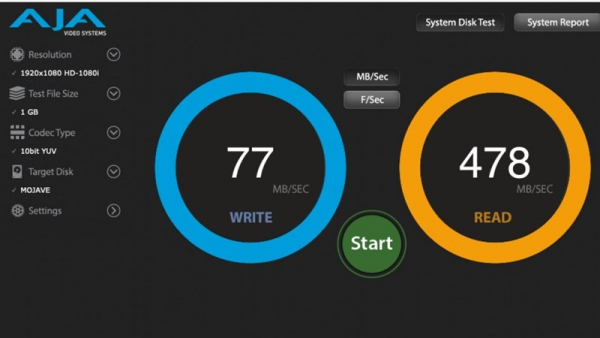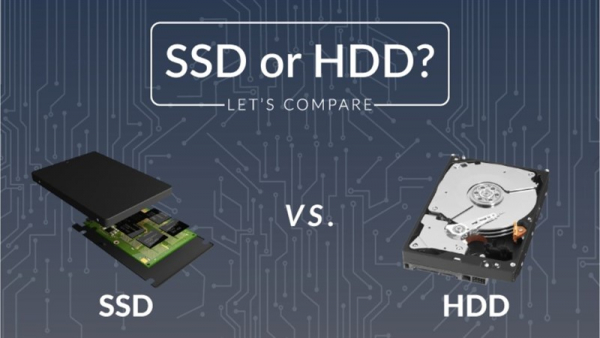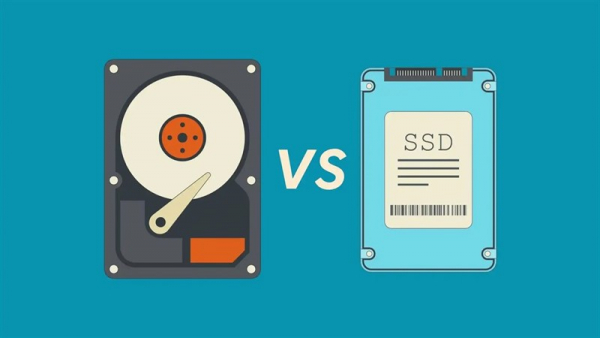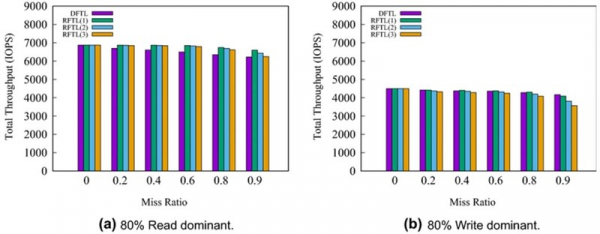How long does it take to clone a hard drive?
If you are a laptop or computer user, you have probably heard of storage hardware components like memory cards, USB drives, or external hard drives. Have you ever wondered why electronics manufacturers encourage us to buy storage devices with extremely fast read and write speeds? In today's article, let's explore the exact meaning and impact of these numbers on your user experience!
What is storage speed?
When purchasing storage drives, you'll often see manufacturers highlight a pair of numbers in their promotional materials. These numbers are typically understood as the metrics for comparing the read and write speeds of a drive. Simply put, read and write speeds are specifications used to compare and evaluate the performance of storage devices in real-world usage scenarios.

Specifically, the read speed metric helps you determine how long it takes to open (read) any data from the storage device. On the other hand, the write speed metric allows you to estimate how long it will take to save any amount of data to the storage device.

These numbers have become particularly prominent as solid-state drives (SSDs) have become the most common form of computer storage, replacing traditional hard drives. A standard HDD can achieve read and write speeds ranging from 80 to 160 MB/s, whereas SSDs typically start at speeds of 320 MB/s and can reach thousands of MB/s in high-end models. This is why devices equipped with SSDs often boast significantly faster boot times, application launches, and overall performance compared to those with HDD storage.
What do read and write speeds mean?
Read/write speeds are performance metrics for storage devices. Although read and write speeds are often combined, they relate to different processes for handling files on your computer, such as internal and external hard drives, solid-state drives, storage area networks, and USB flash drives.

When testing read speed, you're determining how long it takes to open (read) something from the device. For example, when opening a large file of several gigabytes, an SSD with faster read speed can launch it quicker. SSDs also improve your computer's boot time since they take less time to read the large files necessary during the OS loading process.

Write speed is the opposite—it measures how long it takes to save (write) something to the device, indicating the speed at which a file is written to the drive. You're familiar with encountering “write speed” when trying to copy files from one location to another. If the files are large, you'll see a time counter indicating how long the data transfer will take. The faster the read speed, the shorter the file transfer time. The faster the write speed, the shorter the copying time.
Inputs & Outputs Per Second (IOPS)
IOPS is a term in the storage device industry that refers to the number of input/output operations per second a storage device can handle. It measures how quickly a system can accept or generate a set of data or files. Hardware vendors use this term in their hardware specifications (according to Genesys).
When deciding to buy an SSD advertised with the fastest read/write speeds available, you should know that these aren't necessarily the most important metrics of a hard drive. The read and write speeds often mentioned by manufacturers refer to sequential speeds. Essentially, a file structure is a series of data blocks connected in sequence. Sequential speed indicates how fast a drive reads and writes data blocks in a fixed order, which is usually important for reading and writing large files, such as 4K videos.

Most other tasks require reading and writing a series of smaller files stored in random, separate data blocks on your hard drive. In this case, you should pay attention to the drive's random read and write speeds. Sometimes, this can significantly impact minor tasks you perform on your computer, making your experience noticeably faster.
What read speed is suitable for your computer needs?
Since there are currently two types of hard drives, HDD and SSD, their average read/write speeds will also differ:
- HDDs have an average write speed of 50 MB/s to 120 MB/s.
- SSDs have an average write speed of 220 MB/s to 550 MB/s.
If your PC uses a traditional HDD, switching to almost any SSD model can be considered a major upgrade for your device. However, if you are trying to choose the right SSD to upgrade a small laptop or build a more powerful PC, I personally recommend using an SSD with sequential read and write speeds starting from 500 MB/s and above. This number is comfortable for most daily tasks.

If you plan to handle more complex tasks on your computer, SSDs with speeds up to 2000 or 3000 MB/s are also excellent choices for your needs. Note that to use these SSDs, your system must also support NVMe SSD technology.
How long does it take to clone a hard drive?
The time it takes to copy a hard drive depends on several factors, including:
- Hard drive capacity: The larger the hard drive capacity, the longer the copying time.
- Data transfer speed: Data transfer speed depends on the type of connection used (USB 2.0, USB 3.0, Thunderbolt 3, etc.) and the read/write speeds of the hard drive.
- File type: Larger files (like videos, images) typically take longer to copy than smaller files (like documents, text).
- Computer performance: The performance of your computer can also affect the copying speed.
Here are some estimated copying times for common scenarios:
- Copying a 500GB hard drive via USB 2.0: About 2-3 hours
- Copying a 1TB hard drive via USB 3.0: About 1-2 hours
- Copying a 2TB hard drive via Thunderbolt 3: About 30-45 minutes
